Clancy Tucker's Blog, page 15
June 18, 2022
13 August 2022 - STRIP BENCHMARKS IN LAS VEGAS

STRIP BENCHMARKS
IN LAS VEGAS
G'day folks,
These markers are used to determine the ground stability of the Strip.The Las Vegas strip is also known as the busiest street in the world with over 40 million visitors each year. So, it’s very important that its location is clear on maps and GPS.
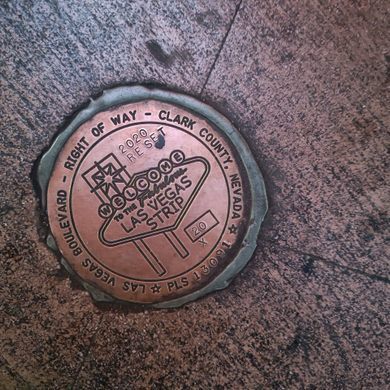
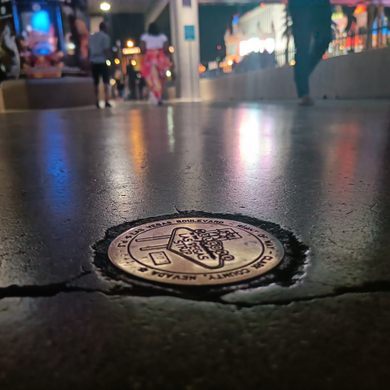
This is typically achieved by surveyors who measure the exact location of several hundred points on the strip, each of them marked with a brass medallion. Besides serving as an absolute position marker, these benchmarks also help surveyors determine if the ground under the strip is stable with the weight of all the casinos surrounding it.
Every decade or so, the points are measured to see if they have moved. If they have moved, this information is researched and the issue is corrected to ensure the safety of the guests and the buildings that line the strip.
Additionally, they signify the right of way for pedestrians, meaning that any car crossing the strip has to yield to pedestrians.
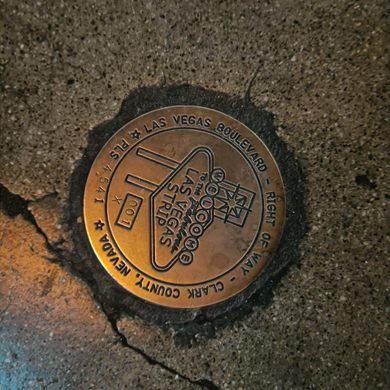
June 15, 2022
12 August 2022 - THE CAT BOAT - AMSTERDAM
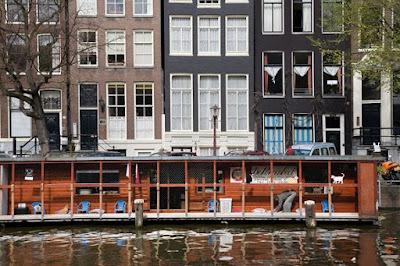
THE CAT BOAT
- AMSTERDAM -
G'day folks,
Welcome to a floating cat sanctuary on an Amsterdam canal.Though cats typically avoid water at all costs, the felines of De Poezenboot, “The Cat Boat,” seem perfectly at home on their floating sanctuary.
De Poezenboot is an animal sanctuary floating on a canal in Amsterdam. It was founded by Henriette van Weelde in 1966 as a home for stray, sick, and abandoned felines, and has since grown into an official charity.
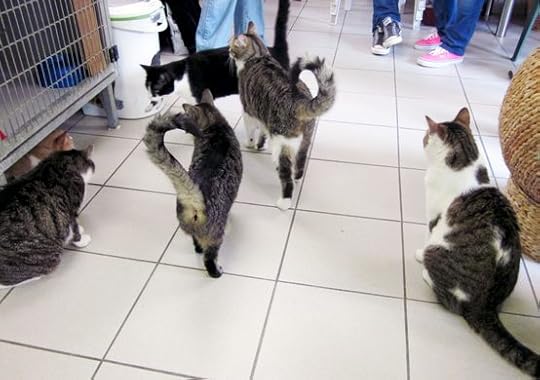
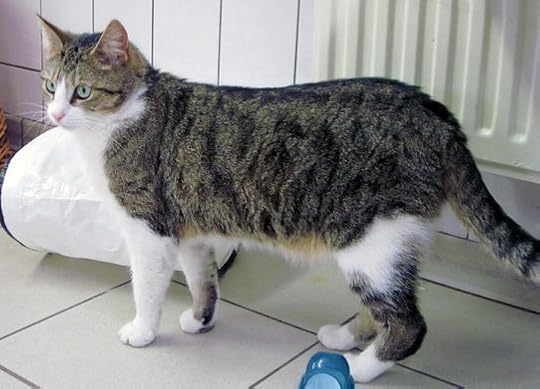


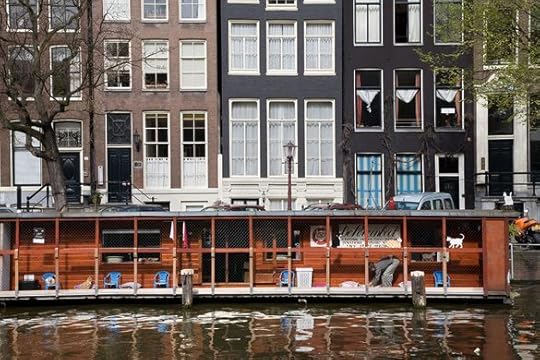
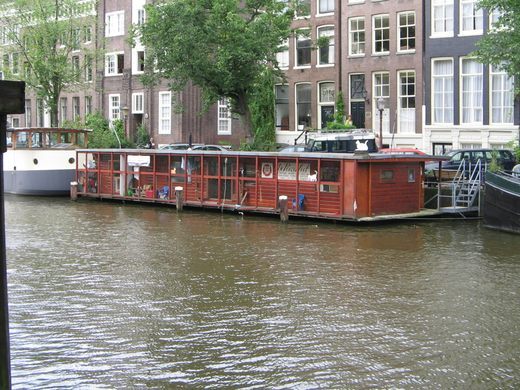
The house boat accommodates up to 50 cats at once, 14 of which are permanent residents. Human visitors are welcome on the vessel as well. Many come to choose a cat for adoption, but tourists are also welcome to drop in and scratch a kitty behind the ears.
As it is a charity, the boat sanctuary stays afloat thanks to donations left by visitors. All the money raised goes toward helping as many Amsterdam cats as possible. The Cat Boat Foundation pays for neutering of cats whose owners cannot afford veterinary care, as well as strays. Volunteers take care of the cats, some of whom are adopted by visitors. The cats are believed to readjust to life on land perfectly well in their new homes.
5 August 2022 - SECRET TUNNEL BENEATH FAMOUS CAFE
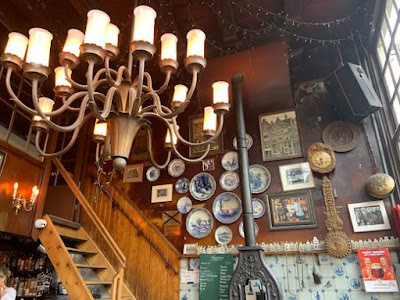
SECRET TUNNEL
BENEATH FAMOUS CAFE
G'day folks,
Famed for its pie, this eatery has a hidden tunnel that allowed Catholics to secretly walk to church during the Reformation.On its surface, Cafe Papeneiland is the perfect example of the gezelligheid, or “coziness,” for which Dutch “brown cafes” are renowned. With its brown walls, chandeliers emitting soft light, and display of beautiful Delft plates and tiles, the eatery offers a warm, welcoming place for a hot drink or stellar slice of apple pie. But beneath its comfy exterior lurks a hidden history of religious resistance.
During the Dutch Protestant Reformation of the 16th and 17th centuries, the government outlawed Catholicism. As a result, Catholics had to worship in secret. This led to the establishment of hidden churches, some of which still exist today. Our Lord in the Attic, for example, is a beautiful, 150-seat chapel, complete with pillars, a giant painting of Christ’s baptism, and a marble-and-gilt altar, all tucked away in (you guessed it) an attic.
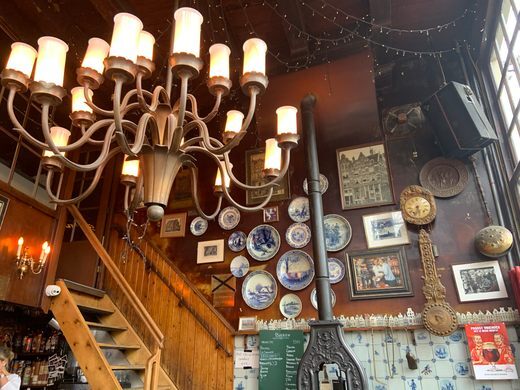
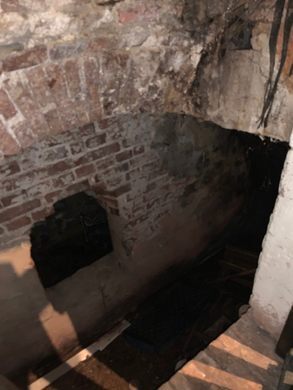
In Amsterdam’s Jordaan neighborhood, worshippers once secretly entered a church through a tunnel that ran beneath the canal. That tunnel opened at the building that houses Cafe Papeneiland, and it can still be seen today. The cafe’s very name is a nod to this history: Papeneiland means “papists’ island,” referencing how the building was a sanctuary for Roman Catholics, who were also known as “papists” due to their allegiance to the Pope.
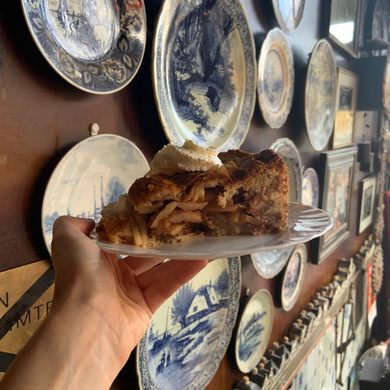
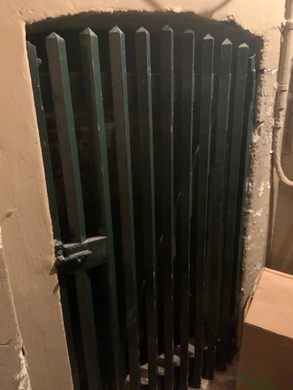
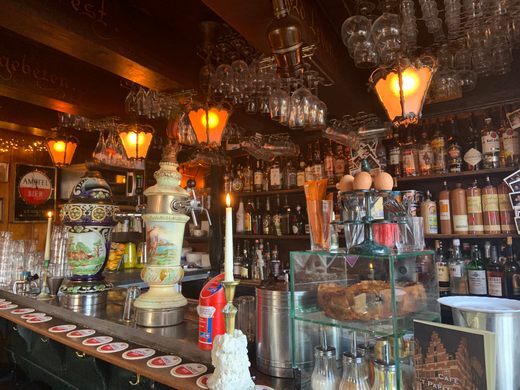
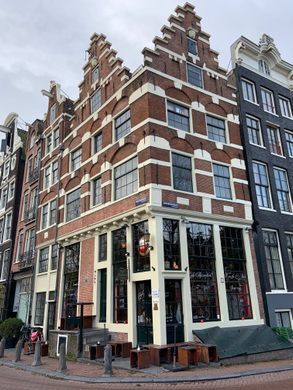
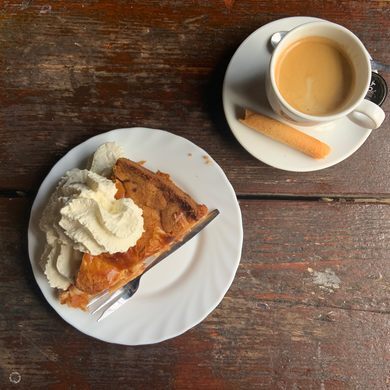
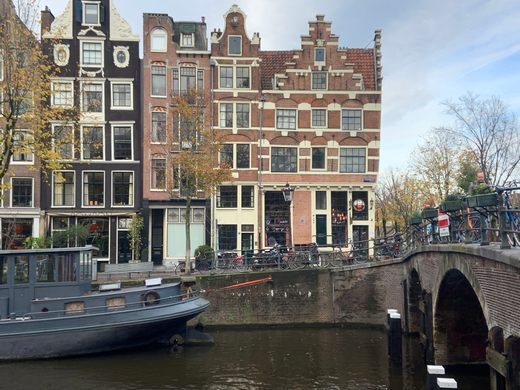
Today, the cafe is most well-known for its apple pie (or “tart,” depending on where you’re from). The fame is deserved: The pie has a flaky crust, the perfect balance of tart-sweet apples and cinnamon spice, and a light-yet-rich tuft of whipped cream on the side. Order a slice, then ask your server to point you in the direction of the tunnel’s entrance. It’s behind a green-barred gate along the stairs to the basement. Sometimes obscured by brooms and other cleaning supplies, this doorway to the past can be easy to miss.
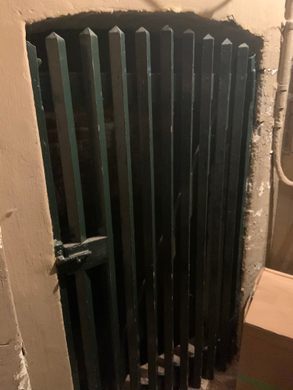
June 12, 2022
7 August 2022 - ANCIENT WEATHER STATION STILL WORKS
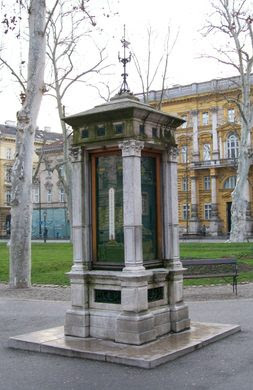
ANCIENT WEATHER
STATION STILL WORKS
G'day folks,
This 135-year-old weather station studies the effects of the climate on human health.Located in the last segment of the long green strip that connects the railway station to the old town of Zagreb, Trg Nikola Šubić Zrinski, also known as Zrinjevac, is said to be one of the most beautiful and romantic parks in the Croatian capital. It is also home to an unusual relic.
In 1884, the physician and amateur meteorologist Adolf Holzer built a meteorological column on the north side of the square, outfitted with scientific instruments to record temperature, humidity, and air pressure over time.
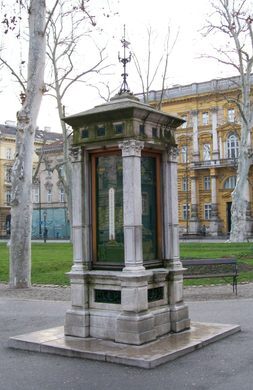
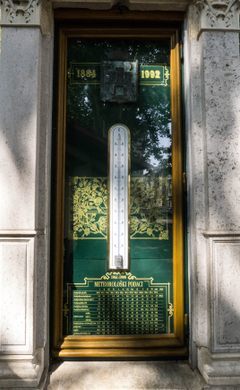
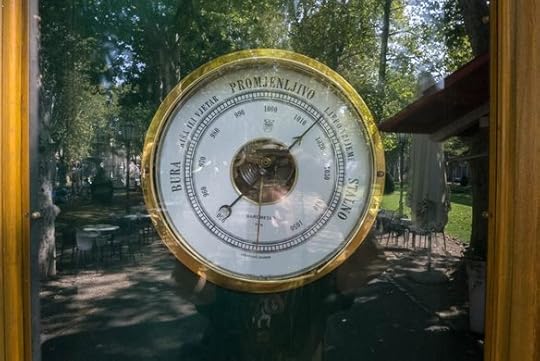
Made of Istrian marble and designed by architect Hermann Bollé, this landmark reflects the habit of notable families to gift precious items to the city. But Holzer’s goal went beyond simply displaying his benevolence or gaining prestige. The data collected were used for his studies, which were viewed as revolutionary at the time, focused on better understanding the impact of a changing climate on human health.
Today, more than 130 years after its construction, these extremely accurate, German-made instruments are no longer used for official measurements, but they continue to do their jobs, and people often stop by to check in on the local conditions. The weather station in Zrinjevac remains a valuable attraction for those who love to discover the most unusual places in the city.


June 11, 2022
4 August 2022 - THE MUSEUM OF MUSHROOMS - CROATIA
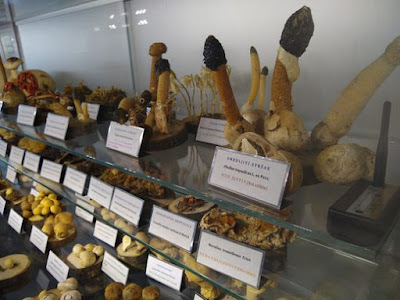
THE MUSEUM OF
MUSHROOMS
- CROATIA -
G'day folks,
This is the only museum in the world dedicated solely to mushrooms.
Situated on the second floor of an office building overlooking Bana Jelacica square, the Museum of Mushrooms displays over 1,500 freeze-dried, preserved mushrooms in three large rooms.
Most of the collection was obtained by professor Romano Bozac, a mycologist who studied and wrote on mushrooms for over 50 years. Organized by similar types of mushrooms, each well-preserved example is labeled with a tag that indicates edibility.
The informative and friendly caretaker is always happy to talk mushrooms and point out unique specimens.
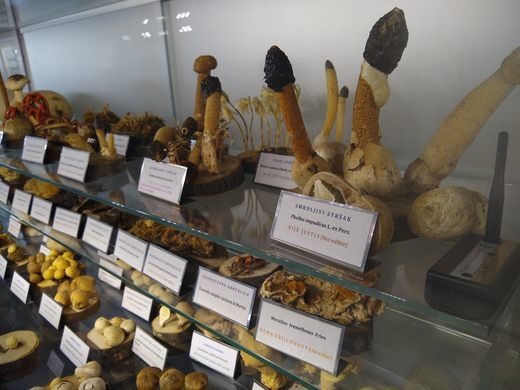
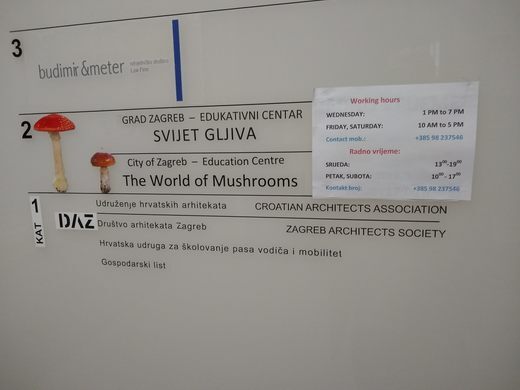
June 9, 2022
11 August 2022 - ANOTHER ABANDONED TUBERCULOSIS HOSPITAL
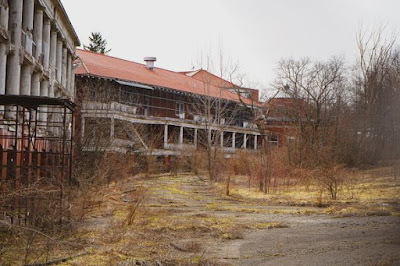
ANOTHER ABANDONED
TUBERCULOSIS HOSPITAL
G'day folks,
Sadly, here is yet another beautiful building going to waste. An abandoned tuberculosis hospital moulders on into an uncertain future.
Located behind fencing on private property in Perrysburg, New York, are the remains of the J.N. Adam Memorial Hospital. They still stand, despite having laid empty for years, yet another historic hospital site that’s too expensive to remove or rehabilitate.
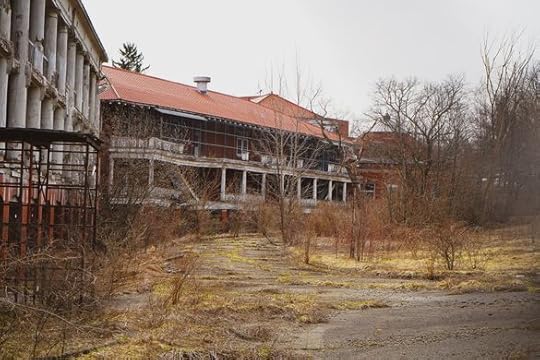
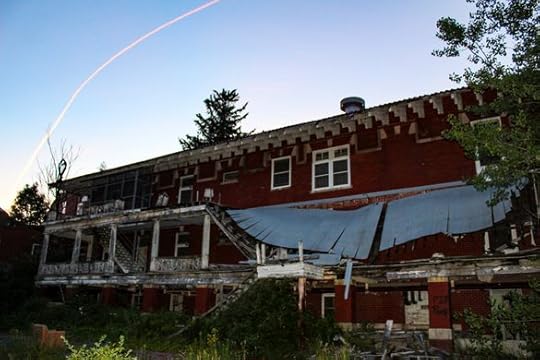
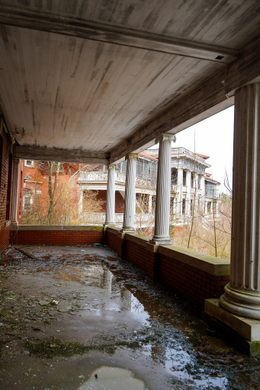
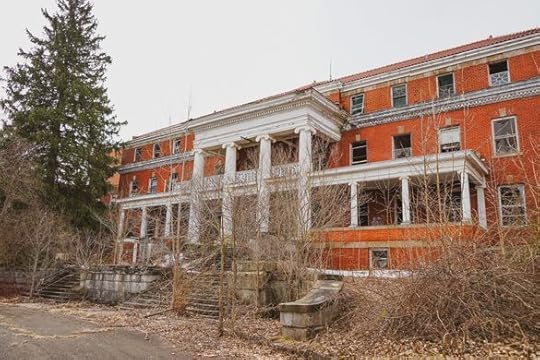
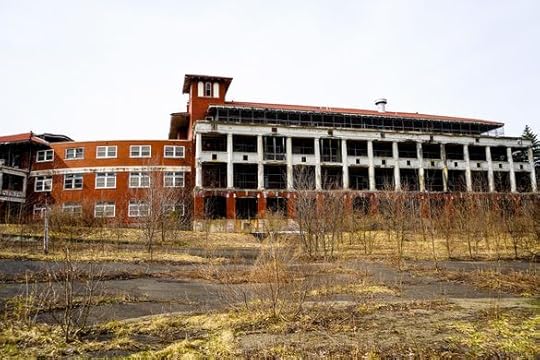
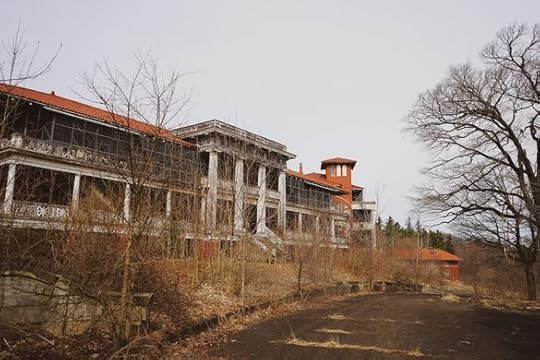
The hospital was opened in 1912 by a former mayor of Buffalo, New York, James Noble Adam, who also owned the J.N. Adam & Co. department store. Its primary purpose was to treat victims of tuberculosis. This hospital was known for what was called the “Sun cure,” or “heliotherapy.” This involved relying on the rays from the Sun to help cure the patients of their disease.
In 1960, the hospital was converted from a tuberculosis hospital into an institutional mental facility. It finally closed its doors for good in 1993 and has not been reopened since. Officials have looked into tearing down or refurbishing the remaining structures at the site, but since both options would cost millions of dollars to implement, no one has been willing to pay, and the site continues to deteriorate.
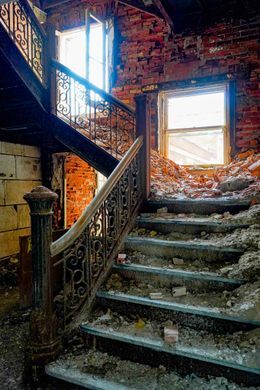
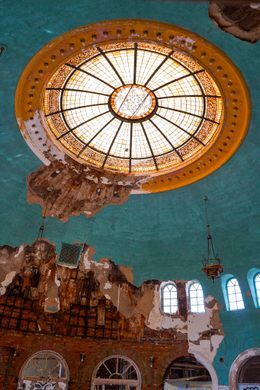
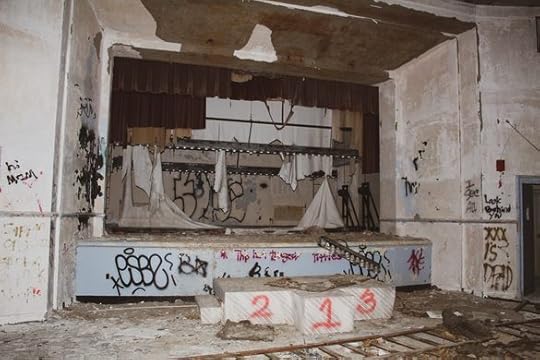
June 8, 2022
3 August 2022 - THE DAY THE BIKINI ARRIVED

THE DAY THE
BIKINI ARRIVED
G'day folks,
Millions of men would come to be grateful that Frenchman Louis Réard, a car mechanic, had an unlikely sideline in the 1940s – he also looked after his mother’s lingerie boutique in Paris. And from there he created the bikini, which was unveiled in 1946.
Up to that point, the most revealing bathing costume on the market displayed a mere sliver of flesh at the midriff. A scornful Réard thought women should be more daring, especially with a spirit of “doing your own thing” taking hold across Europe after the chains of war had finally been broken and people were beginning to enjoy a new taste of freedom.
Adding to the pressure for change was the drive by clothing manufacturers and designers to produce new ranges that would reflect the free-spirited mood of the times.
Rising to the challenge, Réard created a bathing costume using no more than 30 inches of fabric, the bottom half made basically from two triangles of cloth held together with string and the top half no more than a skimpy bra.
He thought the design would be “highly explosive” and, inspired by American atomic bomb tests that had started to take place off the Bikini Atoll in the Pacific Ocean, he cheekily called his swimwear “the bikini”.
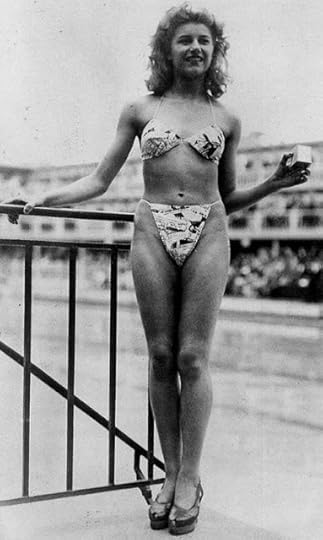
Now he needed to market it. But finding a model prepared to appear in public wearing his scandalously skimpy creation proved to be quite a challenge. Finally, he recruited 19-year-old exotic dancer Micheline Bernardini who had no qualms at all about parading semi-naked for all to see.
Expecting big headlines after the launch at a Paris swimming pool, Réard designed a bikini for Micheline printed appropriately, as he thought, with newspaper type.
Another French designer, Jacques Heim, had produced a competing swimsuit which he called the “atom” and described it as “the world’s smallest bathing suit.” But Réard’s creation was considerably smaller and he advertised it as “smaller than the world’s smallest bathing suit.”
Shockingly for many people, it was also the first time that the wearer’s navel had been exposed.
There was a lot of initial resistance to the bikini; indeed it was banned on beaches in Spain and Italy for a time and was considered unacceptable in the United States. But more and more women wanted one and they appeared in increasing numbers on Europe’s beaches as each summer passed.
A significant breakthrough come in 1958 when Brigitte Bardot, the so-called “sex kitten” of the age, exploded onto cinema screens flaunting a bikini in her iconic film, And God Created Woman.
In the US, barriers were broken in 1960 when pop star Bryan Hyland scored a major worldwide hit with a novelty number which told of his girl dressed only in an “Itsy Bitsy Teenie Weenie Yellow Polkadot Bikini.”
Louis Réard, who insisted that a two-piece wasn’t a genuine bikini “unless it could be pulled through a wedding ring,” continued selling them from his shop in Paris until 1980. He died in 1984 at the age of 88.
2 August 2022 - THE FINAL HOURS OF ERNEST HEMINGWAY
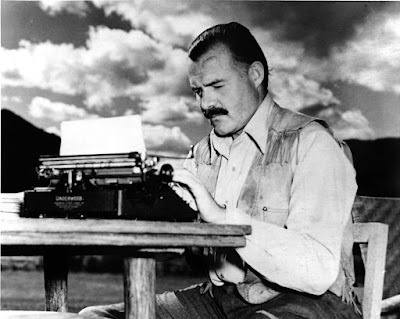
THE FINAL HOURS OF
ERNEST HEMINGWAY
G'day folks,
Ernest Hemingway, the Nobel Prize-winning author, adventurer, war correspondent, bullfighter, drinker and all-round macho man, blew his own brains out in 1961. His fourth wife, Mary, said that he killed himself accidentally while cleaning his double-barrelled 12-gauge shotgun.
But did he? Controversy has surrounded the death of the 61-year-old celebrity since the fatal shooting at his home in Idaho and over the years writers, researchers – and psychiatrists – have delved into the mystery.
In 2006, American psychiatrist Christopher D. Martin said: “The accumulating factors contributing to Hemingway’s burden of illness at the end of his life are staggering.” He listed bipolar mood disorder, depression, chronic alcoholism, repetitive traumatic brain injuries and the onset of psychosis.
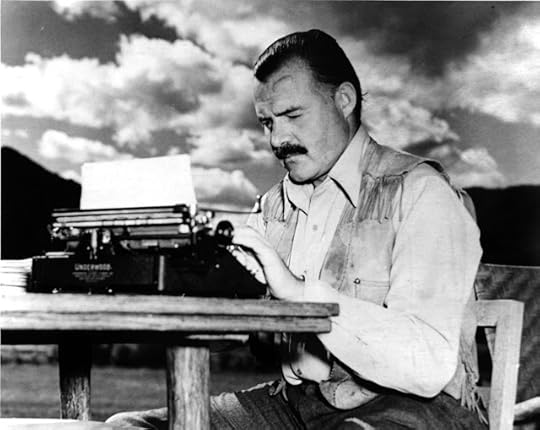
Some commentators have suggested that Hemingway’s problems – and depression – began in 1928 when his father, Clarence, committed suicide by shooting himself in the head. But his grandfather, brother, sister, and granddaughter all killed themselves. And besides suicide, the Hemingway family history is also laced with the inherited condition of hemochromatosis, it has emerged.
Swiss scientist Sebastian Dieguez wrote in 2010 that Hemingway's recorded behaviour and symptoms were misdiagnosed, and his death was not an accident, but a suicide driven by the pain of this untreated disease.
Hemochromatosis is a rare iron-overloading disorder that causes internal damage of joints and organs, diabetes, cirrhosis of the liver, heart disease, and depression. It is also known as the Celtic Curse, and when it goes untreated can cause severe pain, suffering, and death. It is worse when mixed with the kind of excessive drinking in which Hemingway frequently indulged.
In physical decline, then, Hemingway found around 1960 that he faced another devastating and cruel blow – he could no longer write. The words wouldn't come. Deepening depression came instead, according to English writer and researcher John Walsh.
In the spring of 1961, Hemingway was asked to contribute a single sentence to a presentation volume marking John F. Kennedy's inauguration. He could not oblige. He told his lifelong friend and biographer, A.E. Hotchner: "It just won't come any more," and wept.
Walsh concludes: “Building and sustaining the image of ‘Hemingway the Man's Man’ took courage and determination, but it was something he needed to do – and when it dwindled, along with the all-important capacity to write, he had no answer except to go the same way as his father.”
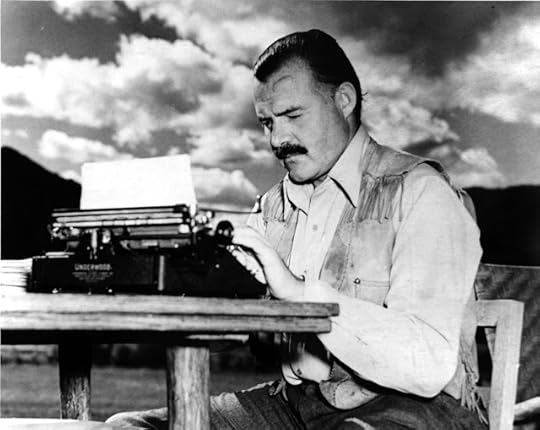
1 August 2022 - THE WORLD'S MOST FAMOUS CHEESE CAVES
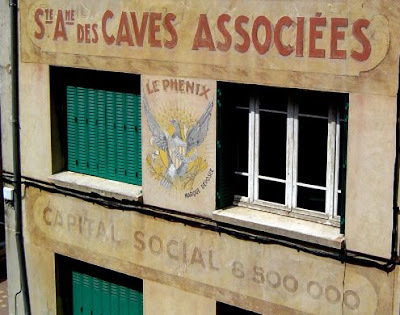
THE WORLD'S MOST
FAMOUS CHEESE CAVES
G'day folks,
Welcome to the world's most famous cheese caves.
According to legend a young shepherd boy fell asleep in a cave while enjoying his lunch. When he awoke he saw a beautiful woman scamper past the opening of the cave. Entranced by her beauty he ran after her leaving behind his meagre lunch of bread and cheese. Months later he returned to find the cheese had grown a unique blue mold. In a moment noted in gustatory history he took a bite. His daring, so the story goes, led to the creation of blue-veined cheeses.


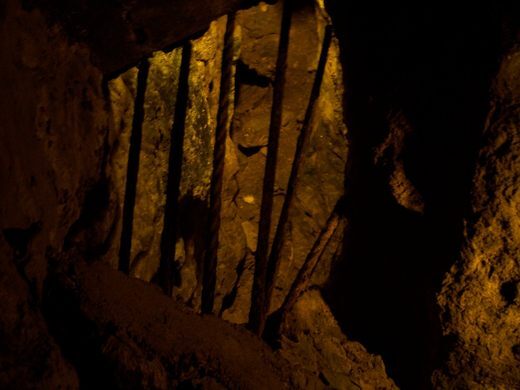
In traditional French cheese-making the cheese-maker leaves a local loaf of sourdough bread, teeming with starter cultures, in underground caves rich with penicillium roqueforti. He lets the bread get moldy then grinds up the moldy loaf and mixes the breadcrumbs with the milk curd. The cheeses are then aged in the caves where the bread went moldy; this encourages the development of blue veins. Most cheese-makers now use a penicillium roqueforti that is made in labs because it makes for more consistent veining.
The name Roquefort is synonymous with the caves in the Averyon department in southern France, where the cheeses are still aged. In order to be legally called “Roquefort,” the cheeses must adhere to a number of rules established by the federal standards of the Appelation d’Origine.
Local archeological evidence of cheese-making (mainly ancient cheese strainers) date back to 2000 B.C.E. According to Pliny, the Roman scholar, Roquefort was already world-famous around 76 C.E. Furthermore, these specific caves have been used since at least 900 C.E. for the production of Roquefort.
The Société des Caves de Roquefort, where 60% of Roquefort is aged, are open to the public year-round. The hours vary greatly, so visit the website for more details.
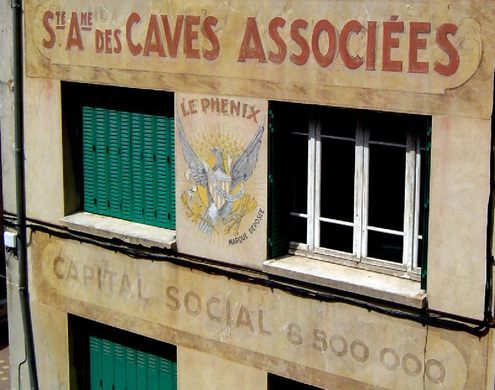
9 June 2020 - RARE COLOURIZED PHOTOGRAPHS OF PARIS
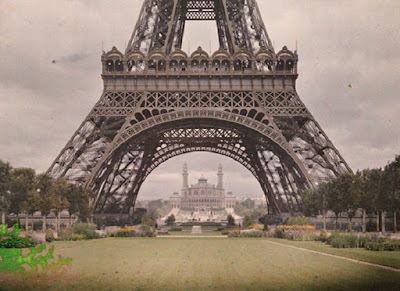
RARE COLOURIZED PHOTOGRAPHS OF PARIS
G'day folks,
As a photographer, I always love to look at the work of others.
Paris is renowned for its inspiring art and romantic flair. And, as you're about to see, even back in the days (the early 1900s) Paris had a charming feel to it. Normally, photos of this era tend to be in black and white, but we were lucky to happen across some rare, vintage color photos of France's stunning capital. Let's take a look at what Paris looked like before any of us had a chance to experience its magic.
In 1909 a wealthy French banker named Albert Kahn executed a documentation of Paris, along with other places in the world.
He did so by using a brand new type of technology at the time: Color photography. In its early days, this camera was called the Autochrome Lumière and Kahn commissioned four photographers to explore various places in the world and snap whatever they could find.
To capture these magnificent shots, they used color filters made from dyed potato starch grains, so that audiences may witness Paris's charm in the early 1900s, and get a clear visualization of what the city was like back then. These beautiful photos have been enhanced and improved for viewing.
Enjoy these ...
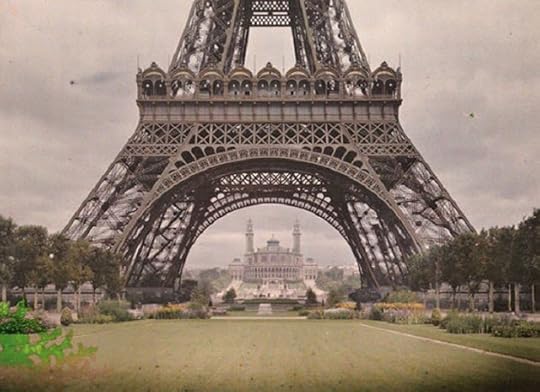

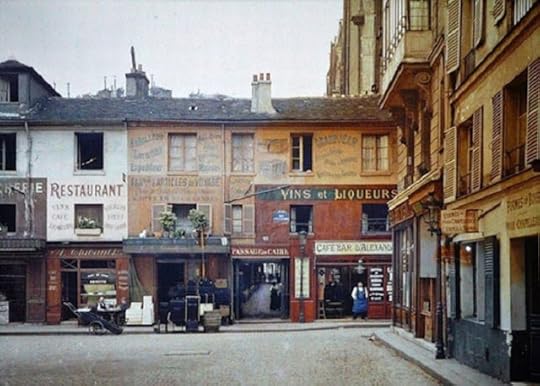
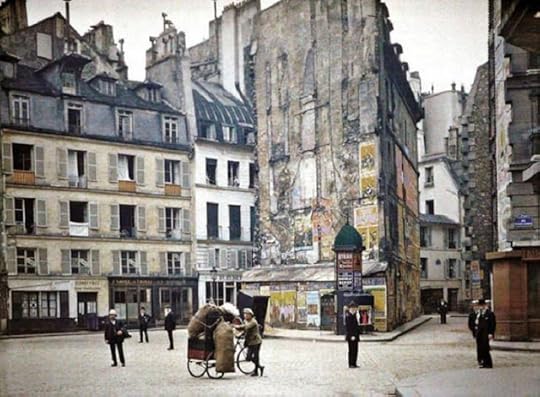
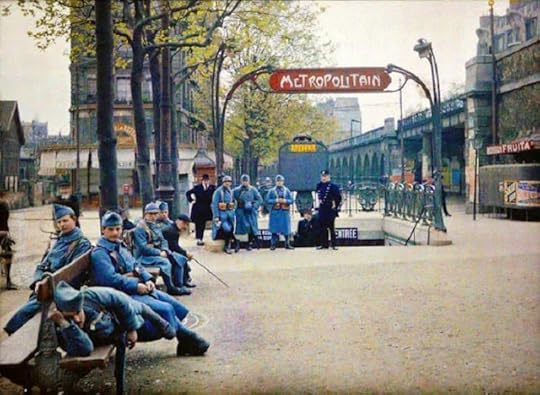
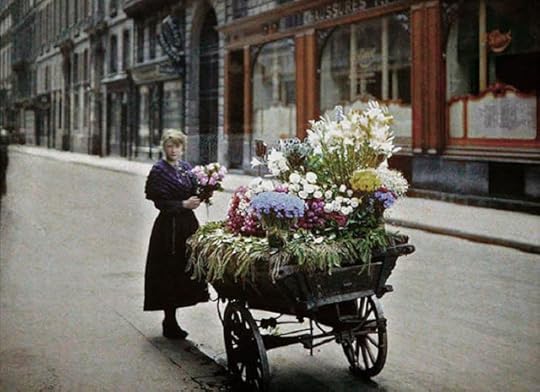
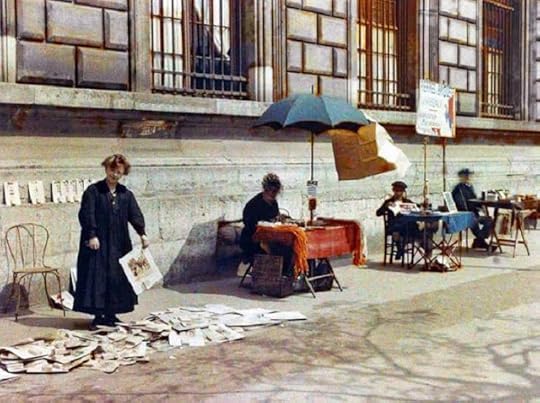
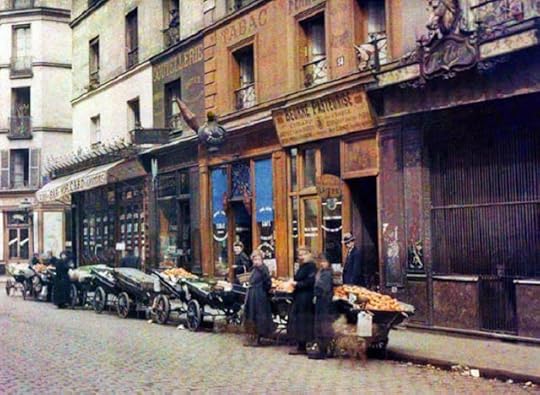
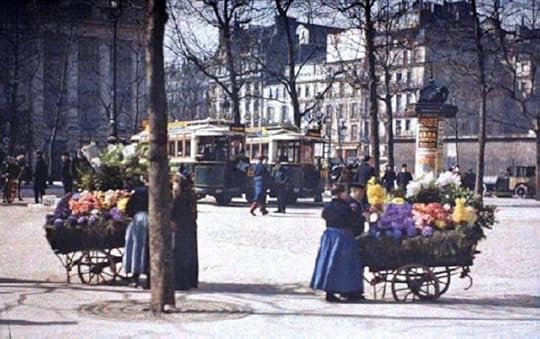
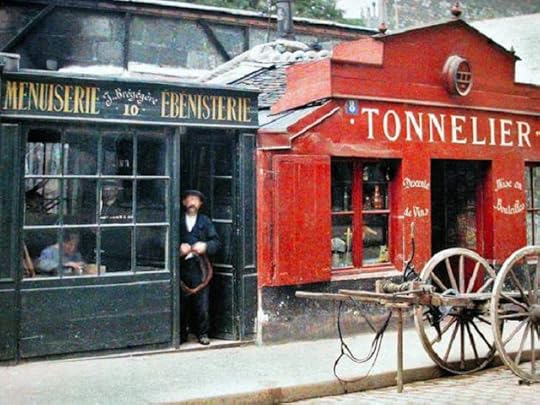
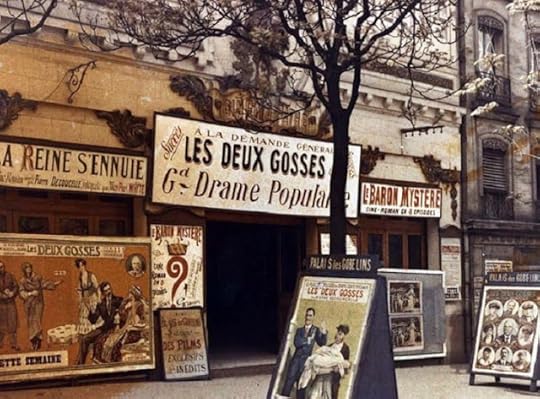
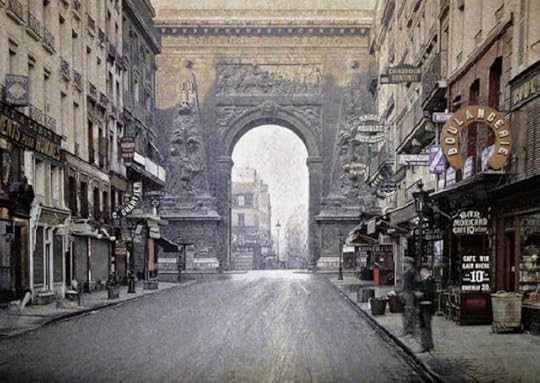
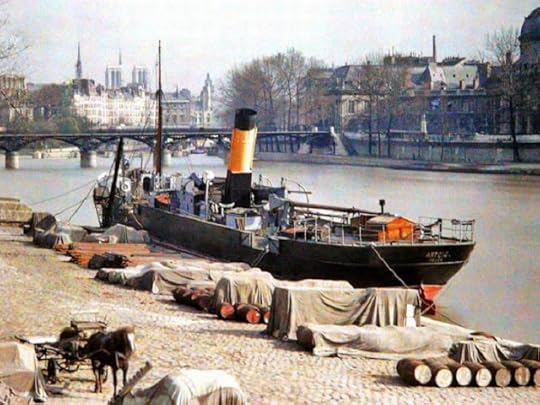
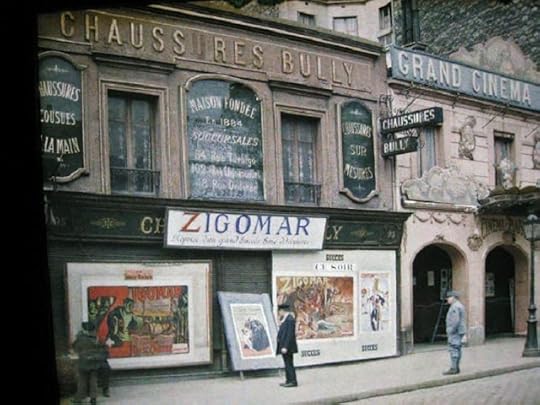
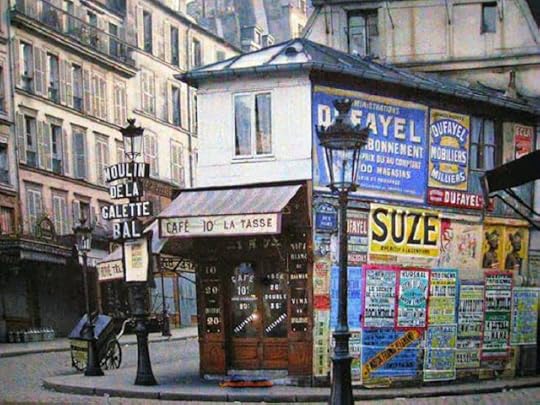

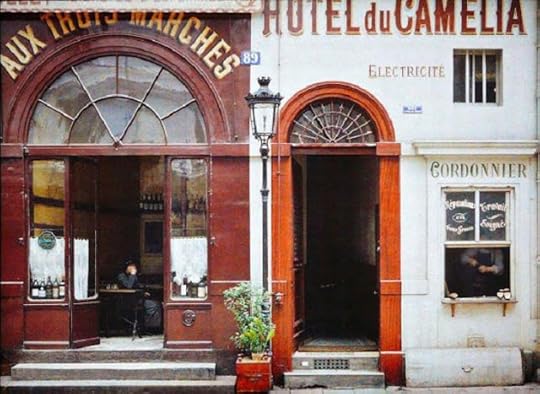


Clancy's comment: Wow. Oh, to be there now with my modern cameras.
I'm ...





